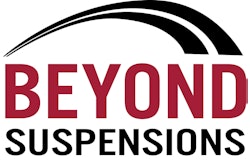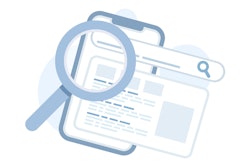Blind optimism is rarely relevant. Cheerleading is often recognized as just that. Being a “glass half-full” guy myself (difficult as a lifelong Cubs fan), I try to remain as positive as possible.
However, taking a cautious or negative view of life has served an important evolutionary purpose, both biologically and in business.
When our early ancestors started spreading out across the wilderness, it paid to be wary and to consider all dangers – saber-toothed tigers, venomous snakes, weather, flooding rivers and delicious-looking (but deadly) fruits and berries.
Quite simply, those who were too optimistic tended to be wiped out early in life, one way or another.
Our evolutionary inheritance, therefore, has endowed us with a strong streak of pessimism which makes us scan horizons for risk and danger, dwell on what goes wrong in life and unconsciously downplay those things that go right.
This is exacerbated exponentially by increased communication opportunities. Headlines focus on what’s wrong, who’s in trouble and how close the “end of society as we’ve known it” might be.
The stark fact is that regardless of business reality, there is already a strong bias toward “half-empty” views. However, if recent elections are any indication, that may be changing as people from all strata of society are looking to embrace the strength, vision and drive of optimists.
This more cheerful disposition needs to take hold at the business level as well. Yeah, business is off. Your choice is simple: confront the challenges or give up.
Whether you are the CEO, branch manager or supplier territory guy, you can’t avoid either this choice or its consequences. If you choose to give up, failure is contagious. If you choose to rally, you transmit this determination as well.
Increasing organizational effectiveness in this climate is tricky. Some of the changes must be strategic. Consider the following:
- This is still a relationship business. Build these most precious assets. Personally visit and call like you’ve never done before.
- Even in these financially scary times, personal recognition is critical – and it is a tool managers can universally afford. “Atta boy” still works!
- Last year, customers wanted to hear the juice on new products or changes in the market. Now all they want to hear is how you can help bring maximum value out of everything they might purchase. Concentrate your company’s focus on this exclusively!
- DO NOT CUT PRICES! Panicky price cuts generate marginal volume increases at best, while the longer-term injury is substantial. This strategy may help you bulk up the quarter in normal times, but in today’s environment, it is pure poison.
- Sure you are facing business pressures, but don’t underestimate the buyers’ plight. Make them include you on their team. Also be aware of organizational shifts in their business. With so much ‘leaning’ going on, make sure you are calling on the right guy. Include as many levels as possible when pitching your own value proposition.
- In many cases, you can add value to your offering by creating your own consultative services based on personal industry or product knowledge. When business starts to reheat, people tend to remember those who were there for them when times were tight.
- Performance measurements need to reflect a broader spectrum of effort than simply sales. The key measure now is account retention. If the numbers are off due to local business conditions, realize that no amount of extra calls or special pricing will create demand. Instead, be sure that what’s “yours” is still “yours,” and amp up your efforts to go after “theirs.” Market share pays off fast when the market turns.
- Finally, recognize the importance of team psychology. Leadership is all about passion – and passion can wane positive or negative.
Opportunity is still abundant! After all, somewhere along the evolutionary line, a smart guy figured out a tasty recipe for saber-toothed tiger in a rich venomous snake and poison berry sauce.







